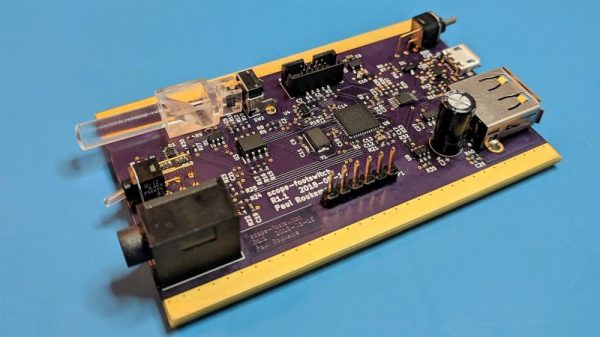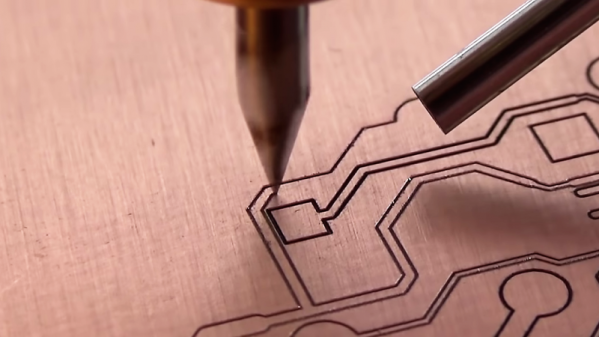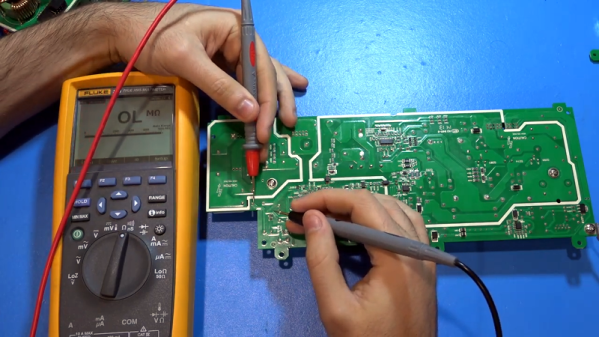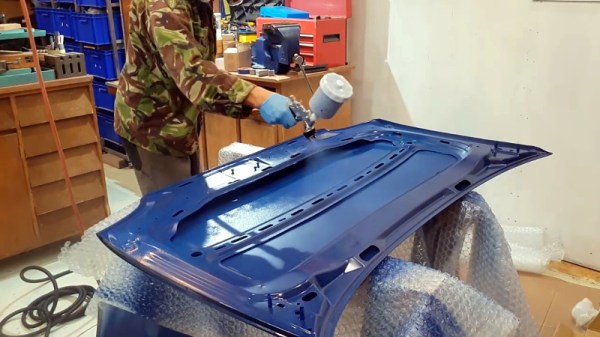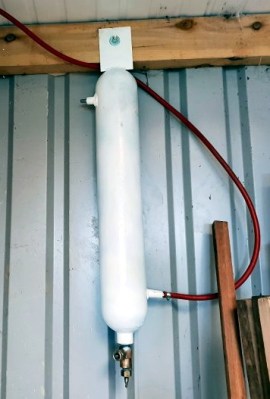A parts tumbler is a great tool to have around. But if you don’t use it all the time, it’s hard to justify dropping hundreds of dollars on one. Fortunately, there are many ways to make your own tumbler while tailoring it to meet the need. Because really, as long as you get the medium moving enough to abrade the parts, you’re good.
[Daniele]’s parts tumbler is cool because it’s fairly easy to make, it’s really quiet, and it does the job quickly. This tumbler moves the medium by using an imbalanced plastic fan, which [Daniele] created by drilling a hole through one of the blades and fastening a short bolt and nut through it. If you’ve ever tried to stop a washing machine from walking away, you may be thinking this is a strange idea, because now he’s got a 4500 RPM vibration machine scuttling about the shop. So really, the true genius of this build lies in the great pains [Daniele] took to absorb all that vibration.
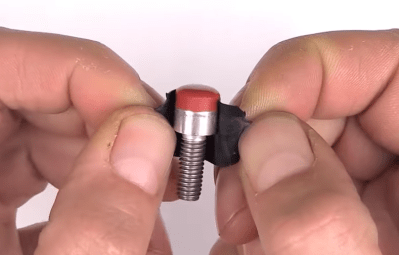 He’s got the fan float-mounted on rubber-lined springs and rubber mats under the washers involved in connecting the latching plastic box to the fan. Our favorite anti-vibration features are the twist-lock power connector and the custom silicone feet made from Motorsil D and cap bolts. We don’t know what the medium is here, but it’s got us thinking Grape-Nuts might work. Blow past the break to chew on the build video.
He’s got the fan float-mounted on rubber-lined springs and rubber mats under the washers involved in connecting the latching plastic box to the fan. Our favorite anti-vibration features are the twist-lock power connector and the custom silicone feet made from Motorsil D and cap bolts. We don’t know what the medium is here, but it’s got us thinking Grape-Nuts might work. Blow past the break to chew on the build video.
The only problem with this build is that this type of fan isn’t cheap, and using it this way will definitely shorten its life.
Not a fan of this type of tumbling? Here’s one that takes your drill for a spin.
Continue reading “Fan-Based Parts Tumbler Is A Breeze To Build”

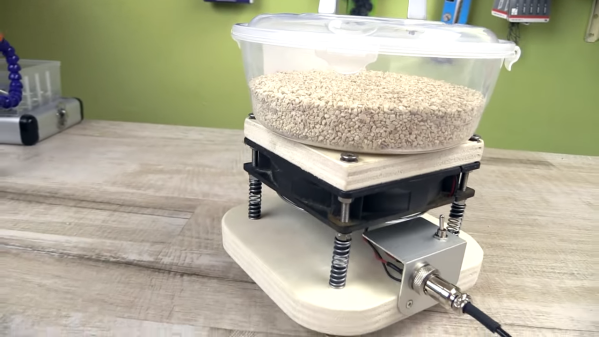
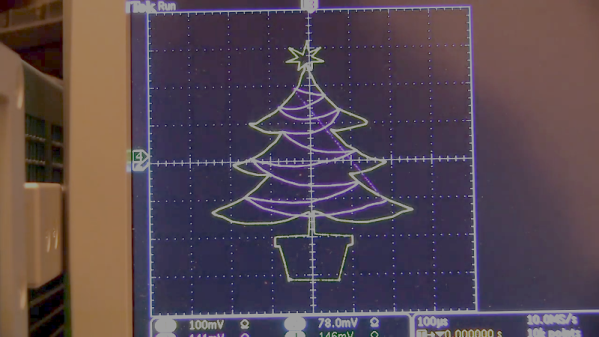
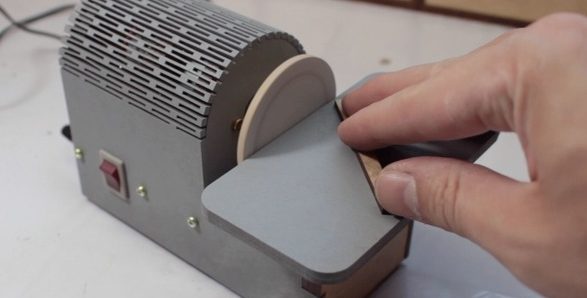
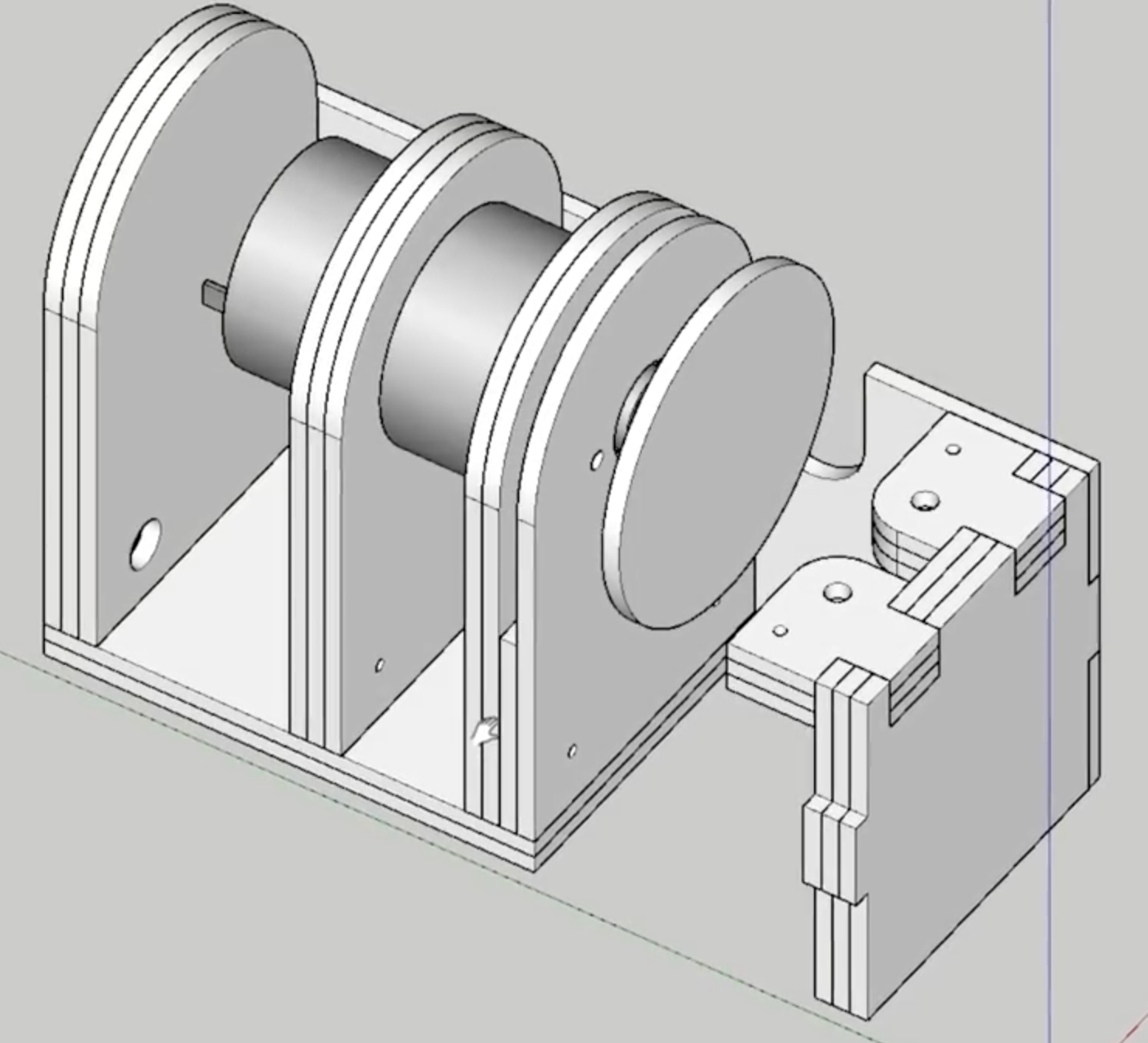 Electrically the build is a simple as can be. It’s just a brushed DC motor plugged into a wall wart with a barrel jack and a toggle switch. But what else does it need? This isn’t a precision machine tool, so applying the “make it out of whatever scrap” mindset seems like a much better fit than figuring out PWM control with a MOSFET and a microcontroller.
Electrically the build is a simple as can be. It’s just a brushed DC motor plugged into a wall wart with a barrel jack and a toggle switch. But what else does it need? This isn’t a precision machine tool, so applying the “make it out of whatever scrap” mindset seems like a much better fit than figuring out PWM control with a MOSFET and a microcontroller.